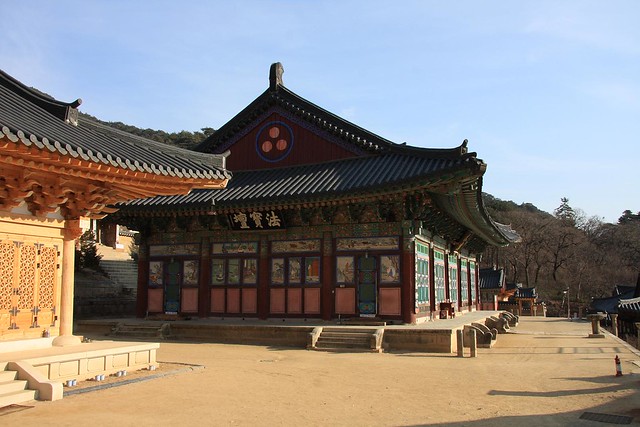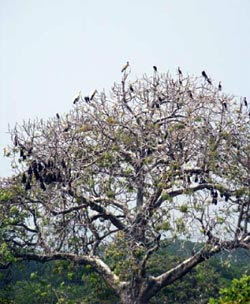 Jakarta's "old city", known also as Kota, clings tightly to its rich neoclassical heritage, and offers both locals and tourists alike an authentic and reminiscent glimpse into the country's unique past.
Jakarta's "old city", known also as Kota, clings tightly to its rich neoclassical heritage, and offers both locals and tourists alike an authentic and reminiscent glimpse into the country's unique past.Stretching from the ancient spice trading harbour of Sunda Kelapa to the pearly buildings of Fatahillah Square, Old Jakarta stands as one of the city's sole reminders of three centuries of Dutch colonialism – and what a stunning reminder it is. Such preservations of the past are a rare find in a city saturated with urban infrastructure, mega-malls, and conurbation conveniences.
Right in the heart of Old Jakarta lies Fatahillah Square, a simple but eye-catching courtyard that showcases the best of the Dutch Empire's architecture and artifacts. The colonisers named the area Batavia, and in its heyday, the square was the commercial and administrative nucleus of the new rulers.
Today, the tiled square is free of traffic, and the tree-lined area is decorated with a smattering of abstract concrete spheres and antique street lights, which makes for an entertaining and relaxing resting spot to people-watch. In the centre of the square is a line-up of official Kota Tua bicycle-taxis (ojeks) ready to peddle customers to their destination.
The area has attracted a sizable presence of young locals who keep the vibe energetic.
"The younger generation, those in their early twenties and teenagers, they appreciate this old town – especially the creative industry people. They always ask me, 'Can we live here?'," says co-founder of Jakarta Old Town Kotaku Ella Ubaidi.
The youth wander in packs throughout the square's nooks and crannies, enjoying the ojek services and posing for a stream of photos for their friends' cameras and cell phones.
At the head of the square is the Jakarta Museum of History, a grand building that boldly displays "Gouverneurs Kantor" (Governor's Office) above its main entrance. The 37-room building, surrounded by Portuguese cannons, was the original Town Hall for Batavia in the 1700s. Today, it displays memorabilia and antiques from several of Jakarta's foreign influences.
The most breathtaking part of the collection is the striking teakwood furniture from the Dutch renaissance period. On the first level there is a handsome oversized table set at which the council deliberated the fate of convicts, as well as a pair of six-metre high filing cabinets that once stored state records. The balcony at the top of the staircase provides the best vantage point to view the square and the chorus of Indonesian flags that are suspended from its buildings.
 Also overlooking Fatahillah Square is the Museum of Fine Arts and Ceramics, which was not only the former office for the Council of Justice but also functioned as military barracks. The stunning columnar-style building is bordered by elegant white pillars and a moat of palm trees. Its gapped-tooth floorboards and spiral staircases create the perfect environment for the museum's extensive collection of porcelain, sculptures, glass paintings and art from around Asia and Europe, many of which date back to ancient times.
Also overlooking Fatahillah Square is the Museum of Fine Arts and Ceramics, which was not only the former office for the Council of Justice but also functioned as military barracks. The stunning columnar-style building is bordered by elegant white pillars and a moat of palm trees. Its gapped-tooth floorboards and spiral staircases create the perfect environment for the museum's extensive collection of porcelain, sculptures, glass paintings and art from around Asia and Europe, many of which date back to ancient times.The award-winning Batavia Café sits at the base of the square, and is the only business that is open through the evening (minus the smoky billiard room next door). The two-story restaurant/café/bar elegantly meshes Chinese décor, including red lanterns, art, and entertainment, with its regal architecture and antique furniture collection. There is an eye-catching wall behind the stairs that is choc-full of an eclectic collection of black and white photographs – featuring pop-art, political figures, celebrated faces and even fetish-style images. The collection extends through the upstairs bathrooms also, where Audrey Hepburn's sly smile greets you at the door. The upstairs bar is full of shimmering chandeliers, heavy drapes, candle-lit tables, and ceiling-high floral arrangements – a combination rich in romanticism.
Just to the west-side of the café stands Wayang Puppet Musuem – the former site of Batavia's Protestant Church. The museum is filled to the brim with an enormous and eclectic collection of wooden and leather puppets and dolls from all around Indonesia and Southeast Asia. The collection at the Wayang Museum inserts a more traditional and indigenous touch to the Fatahillah Square. I am told that if you visit on a Sunday morning you can witness a live wayang kulit, a shadow performance with leather puppets.
The town of Batavia expanded vigorously in the mid 1600s due to its proximity to Sunda Kelapa harbour, the major port for the booming spice trade at the time. Even to this day, the harbour boasts the world's last functioning sailing fleet. The daily activities of the waterfront action are truly a sight to behold; the scene unfolds as a virtual re-enactment of centuries past. Rust-stained pirate-like boats encircle the port's perimeter, while hundreds of tanned dockers tirelessly transport their goods from boat to land and land to boat on a flimsy plank barely forty centimeters in width. Their backs are draped in layers of thick fabrics to assist in the manual transfer of heavy loads.
A young slight boy who perches on the wharf routinely hands out a single bamboo stick to every one of the stream of workers who enters the Suderhana Jaya boat – they are then counted to calculate the total quantities on board.
The workers quietly dine along the seaport's assembly of warungs that offer rice, noodles, and deep-fried treats from within tents strung with bananas and rambutan.
It is here that I discover that I too, as a blatant western-looking westerner, am also an attraction for the workers at Sunda Kelapa. One truck driver asks me if I will pose for a photo with him for his 'collection'. The driver's wares are another nod to the harbour's history – his truck is transporting crates of Jamu, traditional Indonesian medicines produced from leaves, fruits, flowers and roots.
The nearby Bahari Maritime Museum offers respite from the heat of the dock, and is located in the original storage warehouse built by the Dutch East India Company in 1652 for stocking their commodities. The three-storey warehouse comprises several buildings, each complete with iron-barred windows curtained with fading blue-shutters. The stooping doorframes between the buildings are the result of a gradually rising coast level. The rustic buildings are filled with models of sailing boats, larger-scale vessels, navigational apparatuses, cannons, and stunning photography of the harbour's days gone by. A 30ft long boat from Papua can be found in the rear building. Just south of this is the VOC's Uitkijk post - the port's lookout tower. The site under the tower was where prisoners were jailed at the time.
Old Jakarta town also provides many surprises- just driving around the area you can see flashes of the past – be it the large Dutch Empire's great V.O.C sign on a building side, or the famous Dutch drawbridge over the Kali Besar that was used two centuries ago. These remnants are perhaps the most fascinating aspect of the old city – they indicate its profound ability to stand the test of time despite centuries of inattention and unrelenting tropical weather.
Although the area has infinite historical value, aesthetically, many of the structures of Old Jakarta leave much to be desired, and it is no secret that the area is in dire need of attention. Countless buildings, despite being categorised as heritage sites, are revealing dilapidation that has all too easily been overlooked in the exuberance of Indonesian independence. At Fatahillah Square, just mere metres behind Café Batavia is a poignant example of such disregard – the hollow, windowless building highlights the severity of the area's ruin. This part of Old Jakarta does not make the postcards.
It seems the former hub has been deserted in favour of the postmodern gleam that oozes from new Jakarta – and the cracks are showing through. While its days are by no means numbered, make sure you visit this capsule of Indonesian history while you still can.







































